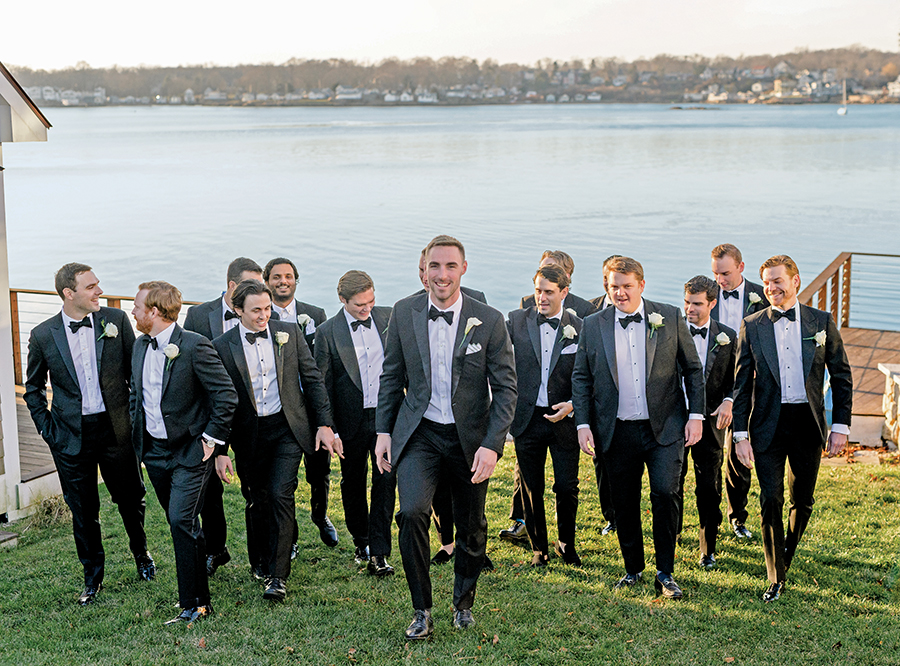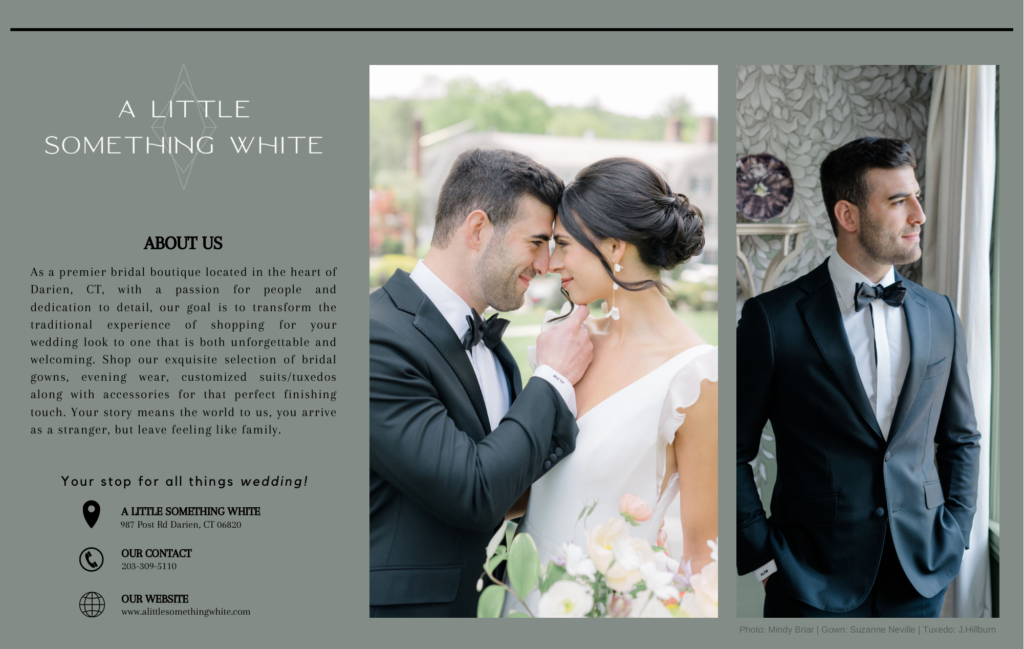Secrets of a Really Great Tuxedo
Style | written by: PAMELA DEY VOSSLER with A Little Something White – a J.Hilburn Stylist Studio

photo courtesy Julia Jane Studios
Cary Grant, Sean Connery, Sinatra and Astaire: While they wore their tuxedos famously with aplomb, is there any man—at any age—for whom the ground does not similarly lift when he puts on a tux? …and who doesn’t rise to the excitement of an event that calls on us to bust out our best?
But what makes a great tuxedo? It starts with fit, and nothing beats a tuxedo custom made for your build, reflecting your style and personality. A tuxedo is one of those wardrobe basics well worth the investment because, depending on what you choose, it never really goes out of style. And while Cary Grant’s tux would still get it done in 2024, there are near endless ways to make today’s tuxedos your own with customization and choices for just about every element of the ensemble. Here are key components to consider:
The Tuxedo Shirt
Black tie events call for French cuffs, either square or rounded are fine. From here, the main differences in tuxedo shirts are:
- 1) The collar – spread or wing tip. While the spread collar is traditional and universal, the wing tip is the more formal option and is designed specifically for bow ties.
- 2) The front – plain, pleated or bib. Plain is the most versatile and on the less formal end of the tuxedo shirt spectrum though you can add a contrasting grosgrain tape to personalize the shirt; pleated comes in many variations (e.g., width, length and number of pleats) and is the most traditional style; the bib front shirt is the most formal.
The Jacket Lapel
There are three types of lapels: notch (with a narrow notch variation), peak and shawl. The notch is the most common suit lapel. While less formal than a peak or shawl lapel, it is classic and timeless. The peak lapel is formal, assertive and perfect for any black tie event. The elegant shawl lapel is the most formal choice.
The Jacket Pocket
There are three basic pocket styles: besom, flap and hacking with a ticket pocket variation available for the besom and hacking versions. While any style will do for a black tie event, a besom (non-flap) pocket is most formal and the slanted version (hacking) draws the eye up rather than out, helping shorter, stockier men appear taller and leaner.
Trim
This is the material used on the lapel, pockets, waistband and leg stripes. Choose black satin, black grosgrain or navy satin, just make sure all trim material is the same.
The Jacket Lining
While tradition calls for a black or dark color, the jacket lining is where you can truly mark the tuxedo as your own, opting for patterns and colors that tie to your interests, your style and personality.
The Jacket Vent
Your choices are no vent, center vent or side vents. The no vent jacket is most traditional. Side vents are a modern take on the traditional style. The single vent jacket is less common but still an acceptable choice if it is your preference.
Some parting thoughts:
Fabric and color / Most tuxedos are made of wool, for the drape and sleek finish it delivers. As for color, black is most classic though color can vary.
On vests and cummerbunds / While these accessories remain classic and still appear from time to time, the cummerbund is nearing extinction.
Bow tie, neck tie, no tie? / Hands down, the bow tie continues to rule.
A word on pants / Either a flat or pleated front is suitable but if there are belt loops, it’s not a tuxedo pant. Wear suspenders that button onto the pants if you want help keeping them up. (They also add an attractive finishing touch). Stick to a plain bottom finish (no cuffs). For a more modern look, hem pants to show just a bit of ankle and pair with a dressy loafer, no socks. This works well with a more fitted pant leg. A longer pant is still the more classic choice.
About pocket squares / For an added bit of sophistication, consider a simple white pocket square made of silk or some other natural fiber. Color works too, especially if you’re going for a more festive look or want something more to express your style. It’s also a way for grooms to tie into the wedding color scheme.
As your life calls you to assess the tuxedo you may already own, the one you may need to replace or the one you may need to buy, remember these wise words from the great Diane von Furstenberg, “Style is something each of us already has, all we need to do is find it.”
Editor’s Note: For tuxedo questions and help finding a style right for you, the deeply knowledgeable stylists at Darien’s J.Hilburn Stylist Studio, located within A Little Something White at 987 Post Road in Darien (one of only 12 J.Hilburn Stylist Studios nationwide), are ready to assist you. For more information or to book an appointment, call 203-309-5110.

